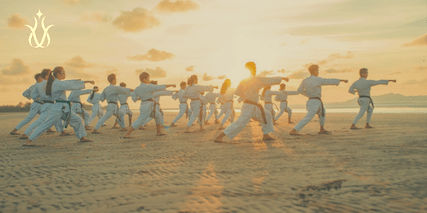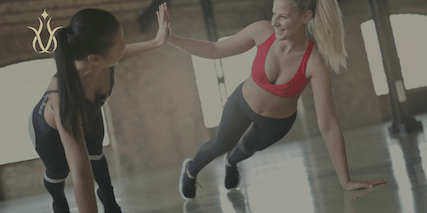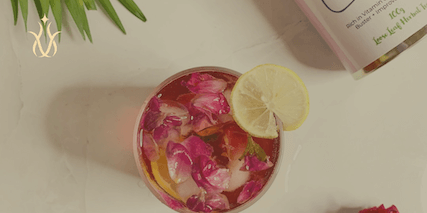Tai Chi, an ancient Chinese martial art, is renowned for its benefits in promoting health and inner peace, especially among older adults. This comprehensive article delves into how Tai Chi can be a key to maintaining physical balance, flexibility, and mental health as we age. Learn about the gentle, flowing movements of Tai Chi that are perfect for seniors seeking low-impact exercise that also reduces stress and anxiety. With insights from experts and testimonials from practitioners, discover the profound impact Tai Chi can have on older individuals’ quality of life, cognitive function, and emotional stability. Begin your journey to a more peaceful and healthier life with Tai Chi.
Introduction
Welcome to our comprehensive guide on Tai Chi, a traditional Chinese practice that combines movement, meditation and breath control to boost your physical and mental health. In this article, we will delve deep into the roots of Tai Chi, explore its numerous health benefits, and guide you on incorporating it into your daily routine.
Understanding Tai Chi
Tai Chi, often referred to as “meditation in motion,” is a mind-body practice rooted in ancient Chinese martial arts. “Tai Chi Chuan” means “Supreme Ultimate Boxing,” translated into English, denoting its martial arts origins. However, it’s not the combat aspect that’s most recognised today, but the flow of gentle, dance-like movements and deep mindful breathing.
At its core, Tai Chi is an exercise of harmony involving every part of the body, linking the mind, body, and spirit. Practising Tai Chi requires moving through a series of postures in a slow, graceful sequence. While doing this, you focus on deep, rhythmic breathing and maintaining a relaxed composure in the present moment.
These postures or forms are based on fluid, circular movements carefully choreographed to flow seamlessly and gently, making it a low-impact exercise that puts minimal stress on muscles and joints. This attribute makes it accessible and beneficial to individuals of all ages and fitness levels, including those with limited mobility.
Although the movements in Tai Chi are gentle and slow, they’re far from light when it comes to health benefits. These movements uniquely challenge your muscles and balance, engaging both the upper and lower body.
Tai Chi is also integrally tied with the concept of ‘Qi’ or life energy. Traditional Chinese belief holds that Tai Chi can promote the balanced flow of Qi, leading to harmony and equilibrium in the body.
In essence, Tai Chi is a journey of understanding your body and mind, allowing you to work with them in unison. By regularly practising Tai Chi, you can experience a range of health benefits, from improved physical strength and flexibility to enhanced mental well-being. This blend of physical exercise and mindfulness makes Tai Chi a holistic practice that promotes overall health and longevity.
Origin and Evolution of Tai Chi
Derived from ancient martial arts, Tai Chi has a rich and complex history that dates back to the 12th century in China. A Taoist monk initially developed it, Zhang Sanfeng, who was inspired by the natural world, particularly the fluid movements of a snake and a crane in combat. From these observations, he created a form of martial arts that emphasised slow, fluid movements and deep breathing.
As time progressed, various styles of Tai Chi evolved, each with unique characteristics and emphasis. These styles mainly include Chen, Yang, Wu, and Hao, named after the families who developed them. However, irrespective of the style, all Tai Chi forms promote a sense of tranquillity through their rhythmic movements, serving as a moving meditation.
In traditional Chinese culture, Tai Chi is much more than a simple form of exercise. It’s a key component of Traditional Chinese Medicine. It is deeply intertwined with concepts of yin and yang, the opposing forces believed in making up the universe, and the flow of ‘qi’, or life force, within the body.
Throughout its evolution, Tai Chi has been adopted by various health professionals worldwide due to its ability to harmonise the mind and body, improve strength and flexibility, and alleviate several health conditions.
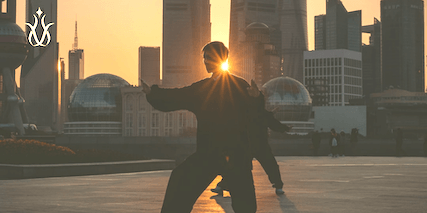
Styles of Tai Chi
The art of Tai Chi encompasses four major styles, each named after the Chinese family from which they originated: Chen, Yang, Wu, and Hao. Each style, while based on the same principles, has distinct characteristics and subtle differences in posture and movement.
Chen Style:
This is the oldest form of Tai Chi, known for its blend of slow, graceful movements interspersed with explosive bursts of energy. Chen’s style involves a fair amount of spiralling and turning, requiring a bit more physical prowess.
Yang Style:
As the most popular and widely practised style worldwide, Yang style Tai Chi is characterised by its smooth, flowing movements and gentle pace, making it more accessible to a broader audience.
Wu Style:
Wu style Tai Chi emphasises micro-movements, precision, and balance. With smaller, more intricate motions, Wu style is often recommended for individuals seeking to improve balance and coordination.
Hao Style:
The rarest style, Hao Tai Chi, focuses heavily on the internal development of Qi. It involves minimal movement, with an emphasis on relaxation and awareness.
While each style offers unique benefits, they all follow the basic principles of Tai Chi, emphasising mind-body connection, fluid movement, and breath control.
Basic Tai Chi Movements
Regardless of style, Tai Chi consists of specific, carefully choreographed movements known as ‘forms’. The number of forms varies across styles, ranging from a dozen to over a hundred. While the sheer number of forms might seem daunting, don’t worry. You can benefit from Tai Chi by starting with just a handful of basic movements.
Commencement:
Every Tai Chi session starts with this form. You begin in a relaxed stance, slowly raise your arms in front of you, and then gently lower them back to your sides. This form helps to centre yourself and connect with your breath.
Parting the Wild Horse’s Mane:
This movement, reminiscent of a horse shaking its mane, involves coordinated leg and arm movements that promote balance and whole-body coordination.
Wave Hands Like Clouds:
This side-stepping movement encourages a smooth flow of energy across your body, enhancing your grace and fluidity.
Grasp the Sparrow’s Tail:
Although complex, this form exemplifies Tai Chi’s blend of defence and attack, promoting strength and tranquillity.
Learning these forms lays a strong foundation for your Tai Chi practice. Remember, Tai Chi is about the journey, not the destination. It’s more important to perform each movement with mindfulness and precision rather than rushing to learn more forms.
As you embrace the practice of Tai Chi and its movements, you’re stepping into a world of tranquillity and strength, merging body and mind in a dance of wellness.

Health Benefits of Tai Chi for Older People
Tai Chi, with its graceful, flowing movements, brings a myriad of mental and physical health benefits. The beauty of this ancient Chinese practice lies in its holistic approach to health and well-being. Let’s explore these benefits in detail.
Physical Health Benefits of Tai Chi
As a low-impact, weight-bearing, and aerobic exercise, Tai Chi checks many boxes in physical health. In addition, it offers an inclusive workout, combining strength, flexibility, and balance, suitable for all fitness levels.
Strength: Contrary to common perception, Tai Chi can be an effective strength-building exercise. Research shows that practising Tai Chi can significantly improve upper and lower body muscle strength.
Flexibility: The flowing, dance-like movements of Tai Chi naturally enhance flexibility, promoting a greater range of motion and reducing stiffness and tension.
Balance: Balance isn’t just about avoiding falls. It’s a critical aspect of overall fitness and functionality. For example, the careful, controlled movements and poses of Tai Chi, along with its focus on deep breathing and mental concentration, can substantially improve balance and stability.
Mental Health Benefits of Tai Chi
Tai Chi isn’t just a physical exercise; it’s a moving meditation. It has a profound impact on mental health and cognitive functions.
Stress Management: The slow, mindful movements of Tai Chi, coupled with deep breathing, create a state of calm and relaxation, reducing stress levels and increasing feelings of well-being. Scientific research has shown it to be beneficial at lowering blood pressure as well as improving sleep quality.
Mindfulness: Practicing Tai Chi encourages mindfulness, helping you stay connected to the present moment, which can enhance mental clarity, focus, and overall psychological well-being.
Tai Chi for Rehabilitation and Recovery
Tai Chi’s gentle, low-impact movements make it an excellent choice for injury rehabilitation and recovery. A study published in the American Journal of Physical Medicine & Rehabilitation showed that Tai Chi could significantly improve functional mobility and reduce pain perception among individuals with knee osteoarthritis.
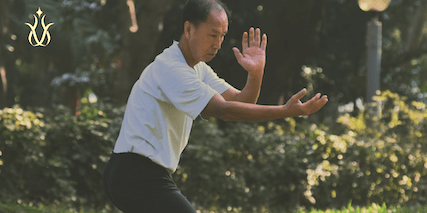
Tai Chi for Older People
Tai Chi is particularly beneficial for older adults, contributing to improved balance, reducing the risk of falls, and even enhancing cognitive function. A systematic literature review reveals that Tai Chi could significantly reduce the risk of falls in seniors. Additionally, evidence suggests Tai Chi can slow cognitive decline in older adults, improving memory and executive function.
The beauty of Tai Chi lies not only in its graceful movements and postures but also in its profound health benefits, contributing to a better quality of life.
Incorporating Tai Chi into Your Daily Routine
Once you’ve come to appreciate the extensive health benefits of Tai Chi, the natural next step is to consider how to integrate this serene, beneficial practice into your everyday life.
Adopting Tai Chi as part of your routine can offer cumulative health advantages beyond those you might gain from intermittent practice.
Practical Ways to Integrate Tai Chi into Lifestyle
So, how can you make Tai Chi a part of your daily routine? Here are some practical tips to guide you:
Find a Suitable Style:
As discussed earlier, Tai Chi comes in various styles, such as Chen, Yang, Wu, and Hao. Each style has its own rhythm, pace, and emphasis. Try different styles and find one that resonates with your preference and fitness level.
Start Small:
If you’re new to Tai Chi, begin with just a few minutes each day and gradually increase your practice time as your comfort and skill level grow.
Leverage Online Resources:
Many online platforms offer Tai Chi classes that you can follow from the comfort of your home. These can be a great way to start, especially if you need help finding local classes or your schedule doesn’t allow them.
Create a Tai Chi Space:
Designate a calm, clutter-free area in your home for your Tai Chi practice. This can help to mentally prepare you for your practice and create a sense of routine.
Pair with Meditation:
Given its meditative nature, Tai Chi pairs beautifully with mindfulness or meditation practice. Consider incorporating Tai Chi before or after a holistic mind-body session if you’re already practising meditation.
Adopting Tai Chi as a daily routine can be transformative. It is a journey of learning and self-discovery that will bring about holistic wellness benefits, manifesting in every aspect of your life, from enhanced physical health to better stress management and improved mental clarity.
Tai Chi vs Yoga: A Comparison
The world of mind-body practices offers a wealth of choices. Two of the most popular options, Tai Chi and Yoga, each provide a unique path towards improved health and wellness. However, choosing between these two often hinges on individual fitness levels, health goals, and lifestyle preferences. Here’s a detailed comparison that could help you make an informed choice.
Fitness Level:
Both Tai Chi and Yoga accommodate practitioners of all fitness levels. Yoga, with its various styles ranging from the gentle Hatha to the more intense Ashtanga, allows for a choice based on your current physical capabilities.
Similarly, with its slow and controlled movements, Tai Chi is highly accessible even for those with limited mobility, making it especially popular among seniors.
Health Goals:
Suppose your primary aim is to improve flexibility and strength. In that case, Yoga might be the better option, as it involves a wider range of postures and movements that stretch and strengthen various muscle groups. On the other hand, Tai Chi is exceptional when it comes to improving balance and coordination. Studies have shown significant reductions in falls among seniors practising Tai Chi.
Stress Management:
Yoga and Tai Chi excel as stress management tools thanks to their inherent meditative qualities. In addition, they promote mindfulness, enhancing your ability to stay present and calm in your everyday life.
Lifestyle Considerations:
While both practices require a quiet, calm environment, Tai Chi, in theory, can be performed in any setting – indoors or outdoors. However, you might find it more aligned with your lifestyle if you prefer to spend time in nature.
While also adaptable, Yoga is generally practised in a more controlled environment, often with props like mats, blocks, and straps.
Integration with Western Medicine:
Both Tai Chi and Yoga are increasingly recognised in the realm of rehabilitation. They’re used as complementary therapies in various medical conditions, including cardiovascular disease, chronic pain, and mental health disorders.
Remember, whether you opt for Tai Chi or Yoga, both practices offer a holistic approach to health, focusing on the body, mind, and spirit. Consider incorporating elements of both into your routine to reap the comprehensive benefits they collectively offer.
Conclusion
The ancient practice of Tai Chi, with its gentle, flowing movements and mindful breathing, offers a holistic approach to health and wellness. Its unique ability to intertwine physical exercise with mindfulness makes it more than just a workout—it’s a way to cultivate harmony between the body and mind.
Evidence-based studies have highlighted the multitude of benefits offered by Tai Chi. From improved strength, flexibility, and balance to enhanced mental clarity and stress reduction, Tai Chi provides a comprehensive workout for individuals of all fitness levels. It’s even effective in aiding rehabilitation and preventing injuries, making it a valuable addition to the healthcare regimen of those recovering from physical ailments.
Furthermore, Tai Chi’s benefits to our older population are particularly noteworthy. This gentle exercise can significantly reduce the risk of falls, improve cognitive function, and enhance overall quality of life.
Whether you’re seeking a new exercise or embracing a mindful way of life, Tai Chi might be the perfect fit. But, as with any new physical activity, remember to start slow, listen to your body, and, when possible, learn from a trained instructor.
Frequently Asked Questions
What is Tai Chi?
Tai Chi, also known as Tai Chi Chuan, is a Chinese martial art that has been practised for both its defence training and health benefits. The term Tai Chi translates as “Supreme Ultimate Boxing” or “Boundless Fist.” It’s a form of martial art that is often recognized for its slow, rhythmic, meditative body movements designed to enhance relaxation, inner calm, and peace.
These movements are part of a mind-body practice that originated in China as a martial art. A person doing Tai Chi moves his body in a slow, relaxed, and graceful series of movements. Each posture flows into the next without pause, ensuring that the body is in constant motion.
What does tai chi do for your body?
Practicing Tai Chi can bring a wide range of benefits to both your physical and mental health:
- Improves Balance and Coordination: Tai Chi movements are slow and deliberate, with a focus on maintaining balance and coordinating the body as a whole. Regular practice can improve balance, coordination, and flexibility, reducing the risk of falls, especially in older adults.
- Enhances Strength and Endurance: While Tai Chi is low impact and requires less exertion than many other types of exercise, it can still help to improve muscle strength and endurance, particularly in the legs.
- Promotes Cardiovascular Health: Some studies have found that Tai Chi can lead to improvements in cardiovascular fitness, such as reducing blood pressure and improving heart rate variability.
- Boosts Mental Well-being: The meditative aspects of Tai Chi can help to reduce stress, improve mood, and enhance overall psychological well-being. It requires focus and concentration, which can also contribute to cognitive health.
- Improves Quality of Life: Regular practice of Tai Chi has been linked to improved quality of life, including better sleep quality and enhanced immune system function. It can also improve self-efficacy and confidence.
- Aids in Chronic Conditions Management: Tai Chi has been shown to help manage several chronic conditions, including arthritis, Parkinson’s disease, and fibromyalgia, by improving mobility and reducing pain and stiffness.
- Encourages Mind-Body Connection: Tai Chi promotes awareness of the body and the present moment, helping to strengthen the mind-body connection. This can lead to better body awareness and improved posture.
Do you lose weight with Tai Chi?
Tai Chi is a low-impact, moderate-intensity exercise. While you do burn calories during a Tai Chi session, it’s not as much as higher-intensity forms of exercise like running or high-intensity interval training (HIIT). However, if you’re transitioning from a sedentary lifestyle or if higher-intensity exercises aren’t suitable for you, Tai Chi can still contribute to the overall calorie burn necessary for weight loss.
The movements in Tai Chi can help tone and strengthen various muscle groups in the body, particularly in the lower body and core. Increased muscle mass can lead to a slight increase in your resting metabolic rate, which can help with weight management in the long term.
Tai Chi is known for its ability to help reduce stress and improve mental well-being. Stress can contribute to behaviours like emotional eating, so managing stress levels could indirectly support weight loss efforts.
Is Tai Chi good for arthritis?
Tai Chi is often recommended as a beneficial exercise for individuals with arthritis due to its low-impact, gentle nature and multiple health benefits. Here’s how it can specifically support those with arthritis:
- Joint Mobility: Tai Chi involves slow, controlled, and low-impact movements that can help to improve joint flexibility and range of motion, both of which can be affected by arthritis.
- Muscle Strength: The movements in Tai Chi can help to strengthen the muscles around the joints, providing them with better support and potentially reducing pain and stiffness associated with arthritis.
- Balance and Coordination: Tai Chi is well known for improving balance and coordination. This is particularly beneficial for individuals with arthritis, as they may have an increased risk of falls due to joint instability or weakness.
- Stress Reduction: Arthritis can be associated with psychological stress and anxiety due to chronic pain and disability. The meditative aspects of Tai Chi can help to reduce stress and improve overall mental well-being.
- Pain Management: Some research suggests that Tai Chi can help to manage pain in individuals with arthritis. A systematic review and meta-analysis published in 2013 found that Tai Chi can reduce pain and improve physical function in people with osteoarthritis.
What are the most popular Tai Chi exercises?
Tai Chi comprises many exercises, but there are several that are particularly popular because they offer foundational skills in balance, fluidity, and focused relaxation. Here are some of the most common ones:
- Opening Posture of Tai Chi: The opening move of any Tai Chi form is designed to prepare the practitioner both physically and mentally for the exercises to follow. It helps bring the mind to a state of focus and calm.
- Parting the Wild Horse’s Mane: This popular Tai Chi form simulates the act of parting a horse’s mane. It involves gentle stretching and turning, providing a good exercise for the spine and waist.
- White Crane Spreads its Wings: This form imitates a crane spreading its wings. It’s a good exercise for balance as it requires the practitioner to stand on one leg, strengthening leg muscles and improving overall coordination.
- Brush Knee and Step Forward: This exercise improves balance, coordination, and the rotation of the torso. It involves a brush-knee movement paired with a step forward.
- Wave Hands Like Clouds: This is a very characteristic Tai Chi form, where the hands “float” across the body like clouds. This movement is said to cultivate the flow of Qi, or energy, throughout the body.
- Grasp Sparrow’s Tail: A sequence of movements that includes “Ward Off,” “Rollback,” “Press,” and “Push.” It’s often taught early because it includes such a variety of fundamental movements.
Is Tai Chi safe for beginners?
Absolutely. Tai Chi is a low-impact exercise that suits individuals of all fitness levels. However, as with any new exercise routine, it’s advisable to consult with a healthcare professional before starting, particularly if you have any underlying health conditions. Beginners should consider enrolling in a Tai Chi class.
How often should I practice Tai Chi?
Consistent tai chi practice is key. Aim to practice a few times a week, gradually increasing as you become more comfortable with the movements. However, many Tai Chi practitioners find daily practice beneficial.
Can I practice Tai Chi at home?
You can practice Tai Chi anywhere once you’ve learned the basic movements. However, beginners might benefit from attending classes to learn Tai Chi from an instructor initially to ensure proper form and technique.
How long does it take to see the benefits of Tai Chi?
While this can vary from person to person, many people report feeling improvements in their stress levels, balance, and flexibility within a few weeks of starting Tai Chi.
What are the world’s best Tai Chi retreats?
Here are some of the top Tai Chi retreats in the world for Tai Chi training:
- Shaolin Temple Retreat – Dengfeng, China
- Tao Garden Health Spa & Resort – Chiang Mai, Thailand
- Wudang Taoist Wellness Academy – Wudang Mountains, China
- Omega Institute for Holistic Studies – Rhinebeck, New York, USA
- The Esalen Institute – Big Sur, California, USA
- Taoist Tai Chi Society – Various locations worldwide
- Kripalu Center for Yoga & Health – Stockbridge, Massachusetts, USA
- Chi Center – Santa Fe, New Mexico, USA
- Taoist Sanctuary of San Diego – San Diego, California, USA
- Tai Chi Bali Retreat – Ubud, Bali, Indonesia
8. Which are the best Tai Chi retreats in Europe?
- Tao’s Center (Paros, Greece): Nestled on the beautiful island of Paros, Tao’s Center offers Tai Chi retreats in a tranquil and picturesque setting. With experienced instructors and a range of Tai Chi classes, participants can learn Tai Chi or deepen their practice and enjoy the peaceful surroundings.
- Burren Yoga and Meditation Centre (County Clare, Ireland): This retreat centre in the heart of the Burren region offers regular Tai Chi retreats, combining the practice with meditation and mindfulness. Surrounded by stunning landscapes, participants can rejuvenate their minds, body, and spirit.
- Osho Afroz Meditation Center (Lesvos, Greece): Known for its diverse range of meditation practices, Osho Afroz also offers Tai Chi classes. Set in a serene environment on the island of Lesvos, participants can immerse themselves in Tai Chi practice while enjoying the natural beauty of the surroundings.
- La Borde Blanque (Toulouse, France): This retreat centre in the French countryside offers a range of wellness programs, including Tai Chi retreats. With experienced Tai Chi instructors and a peaceful atmosphere, Tai Chi participants can embrace the benefits of Tai Chi while enjoying the charm of rural France.
- Azulfit Surya Retreat (Fuerteventura, Canary Islands): Located on the stunning island of Fuerteventura, Azulfit Surya Retreat offers Tai Chi classes in a serene beachside setting. Participants can combine their Tai Chi group practice with yoga, meditation, and relaxation, immersing themselves in a holistic wellness experience.
Resources:
Negrini F (2021). Is Tai Chi beneficial for rheumatoid arthritis?-A Cochrane Review summary with commentary. Available from: https://pubmed.ncbi.nlm.nih.gov/34097356/
Huston P, McFarlane B (2016). Health benefits of tai chi: What is the evidence? Available from: https://pubmed.ncbi.nlm.nih.gov/28661865/
Wayne PM at al (2014). Effect of tai chi on cognitive performance in older adults: systematic review and meta-analysis. Available from: https://pubmed.ncbi.nlm.nih.gov/24383523/
Yang GY et al (2021). Tai Chi for health and well-being: A bibliometric analysis of published clinical studies between 2010 and 2020. https://pubmed.ncbi.nlm.nih.gov/34118389/
Harvard Health Publishing, Harvard Medical School. (2020). The health benefits of tai chi. Available from: https://www.health.harvard.edu/staying-healthy
National Center for Complementary and Integrative Health. (2021). Tai Chi and Qi Gong: In Depth. Available from: https://www.nccih.nih.gov/health
Disclaimer: This article is for informational purposes only and should not replace professional medical advice. If you have specific concerns or medical conditions, it is recommended to consult with a healthcare professional for personalised guidance and support.
Related Topics
The Benefits of Pilates: Improving Balance, Strength, and Flexibility
Top 10 Health Spas for Ultimate Wellness
The Best Yoga Retreats in the World for a Life-Changing Experience
